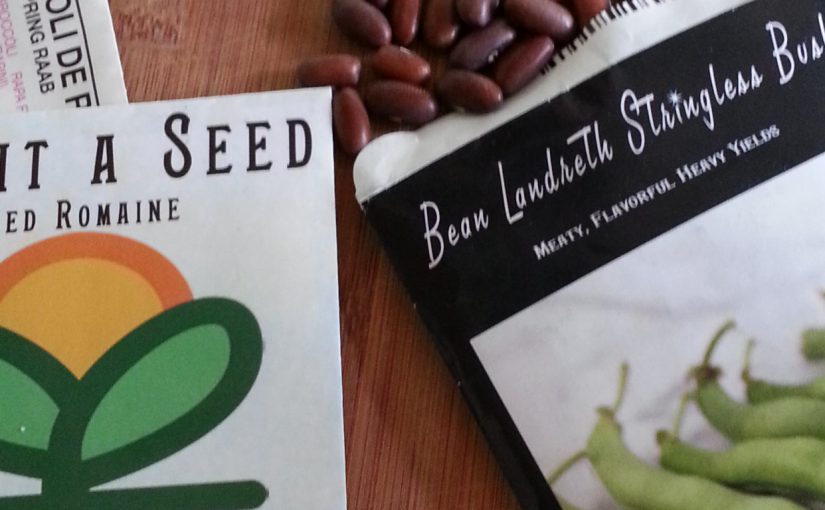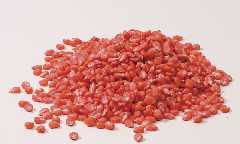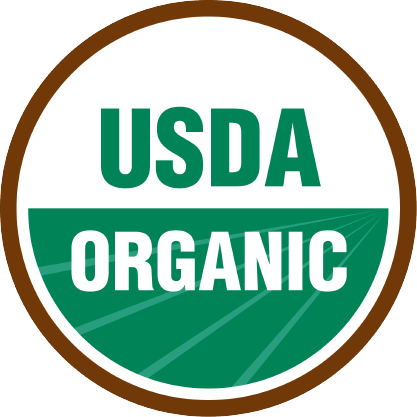While most of those gardening tasks are coming to an end, in most parts of the US it’s time to think about planting a few things in the veggie garden to bring a flavorful bounty next year – garlic (and a few related alliums).
I often reference Halloween and vampires when I talk about garlic, not just because traditional lore says that garlic repels vampires, but because it is a good reminder of when to plant garlic in the garden. October is the prime time for adding the alluring allium to the garden. You can also remember that you plant garlic during the same period that you plant spring flowering bulbs.
Why do vampires hate garlic?
Yes. Vampires are fictional (unless someone finds some empirical evidence of their existence, since you can’t prove a negative 😉 ). These bloodsucking creatures of folklore may actually have a basis in fact that could explain their aversion to garlic. Way back when people didn’t have science to understand things, they often invented explanation for things that were supernatural. Sometimes these explanations may have actually had some truth to them.
In this case, the symptoms of vampiricism could have evolved from the symptoms of porphyria – a set of rare disorders of hemoglobin (there’s the connection between vampires and blood). Symptoms of porphyria include shrunken gums (that could make teeth look like long fangs), painful sensitivity to sunlight, and….and averse reaction to garlic. The reaction comes from the effect of garlic on the blood – it can stimulate red blood cell turn over and increase blood flow, both of which can exacerbate symptoms of porphyria and cause acute, painful attacks. There’s also an allegorical connection – vampirism was considered a disease (or represented the spread of disease in some literary cases) that was spread by a causal agent and garlic was seen as a curative for disease (it does have some antibacterial properties). Note: other possible symptoms of porphyria can be excessive hair growth in random areas of the body, which gives it a connection to lore around lycanthropy.
On to the gardening
Now that we’ve covered some trivial, albeit interesting, info lets get on with the gardening!
While many people are accustomed to the single variety available in grocery stores, there are several different types of garlic that all have different flavor characteristics. These types can be classed in two categories; hardneck garlic has a hardened central stem when it dries, and softneck garlics remain soft and pliable. Softneck varieties are the ones that lend themselves to being braided into those hanging garlic braids. Softneck varieties are also longer-storing than hardneck varieties.
It can be tough to find garlic in local garden centers to plant. Those that do carry garlic, often carry it at the wrong time of year for planting when it is shipped in on the spring garden displays. If you don’t have friends to share their garlic with you, or a local farmer to buy some from, you are going to have to go the mail order (or online order) route.
Once you have your garlic bulbs, split them up into cloves, being sure that you have a piece of the basal plate (the part that holds them all together) on the clove. This one clove will turn into a whole bulb over the growing season.
Plant the cloves tip up about 4 to 6 inches apart and about 2 inches deep in loose, organic soil. Mulch after planting with about one inch of straw or shredded newspaper.
Garlic is a relatively heavy feeder, so it would benefit from a good balanced fertilizer treatment with nitrogen after it is established. You can also plant them in the garden where you grew beans over the summer – the bacteria that colonized bean roots adds nitrogen to the soil.
After that, just be patient. It may pop up before winter if the weather is mild, but don’t worry – it can survive even if a freeze kills the growth back to the ground. Garlic requires little maintenance, and only requires water if the weather turns very dry. Harvest it once the leaves start to die in mid-summer (around July, unless it is an early-maturing variety). Be sure to save some to plant next year and store the rest for use in the kitchen.
Aside from garlic, there are some other odoriferous onion relatives you can plant this time of year like shallots and perennial onions in the vegetable garden or edible landscape.
Shallots have a mild onion flavor and are great because they form cloves like garlic (meaning you don’t have to cut up a whole bulb if you just need a little bit) and store well. The beauty of shallots is that they can also be planted in really early spring — they are a multi-seasonal crop. You can also start them from seeds in the spring.
Shallots are technically perennials, as they will grow over many years if left undisturbed. However, to harvest them, you have to dig them up so they are usually grown as annuals. Once you dig them up, use the larger bulbs for cooking and save the smaller ones for replanting.
Multiplier onions, sometimes called “potato onions” are another fall-planted perennial. These plants produce clusters of bulbs (hence the name “multiplier”) that are harvested in the early summer for bulb onions.
One of the benefits of these and other perennial onions is that you can harvest the green blades of the plant for use as green onions or scallions throughout most of the winter and spring.
Egyptian walking onions are another perennial that can be harvested either for its bulb or as a green onion. The name comes from the bulbils that form at the top of the flower stalk. When they mature, they get heavy enough for the stalk to collapse and fall over, creating a new bunch of onions away from the mother plant. You can allow them to do this to fill in an area, though most people limit it by harvesting the bulbils before they fall.
There are also perennial leeks that have a flavor similar to leeks and can be harvested as green leeks through the winter or dug up as small, tender leeks in the spring.
If you love growing perennial vegetables that add flavor to just about any dish, give these tasty plants a try. They’re really simple to grow and can keep your garden and your kitchen full of fun and flavors for years to come.
A quick primer on types of garlic
Hardneck Varieties
- Purple Stripe — bulbs have purple on the outside. Some of the tastier garlics that become deliciously sweet when roasted.
- Porcelain — popular gourmet variety. Usually has a more robust and spicy flavor. Bulbs are typically large and have large cloves.
- Rocambole — Rich, complex flavors popular with chefs. Their scapes (edible blooms) form a double loop. They do not do well where winters are warm.
- Asiatic/Turban — Do not store for long periods. Mature earlier in the season (late spring as opposed to summer) than other types. Flavors are usually strong and hot.
- Creole — Attractive red color. Performs well where winters are warmer. The flavor is similar to (though milder than) Asiatic/Turban Varieties.
Softneck Varieties
- Artichoke — the grocery store garlic (California White) is an artichoke garlic, though other varieties have more complex flavors. Bulbs tend to have multiple layers of cloves.
- Silverskin — often the last in the season to mature, these are the longest-storing garlics.
Elephant Garlic
This is a common “garlic” planted by many gardeners because it has large, easy to use bulbs with a garlicky flavor. Though it is technically not a garlic species – it is a type of perennial leek.






 “Certified organic” means that the producers practices have been certified to meet the requirements laid down by a certifying agency. A certifying agency could be a non-profit or a state department of agriculture. The requirements and practices vary from entity to entity.
“Certified organic” means that the producers practices have been certified to meet the requirements laid down by a certifying agency. A certifying agency could be a non-profit or a state department of agriculture. The requirements and practices vary from entity to entity. “
“